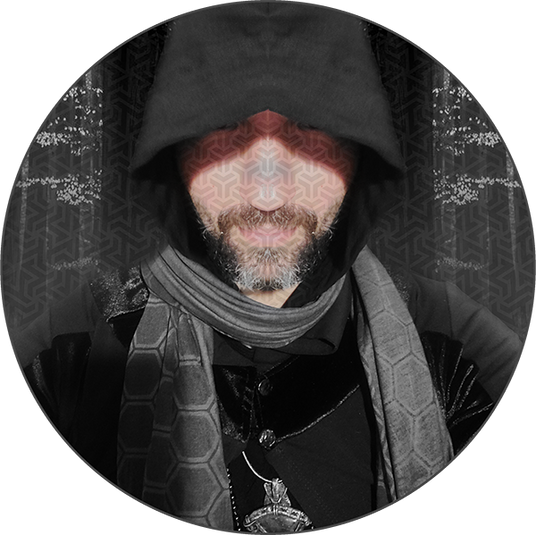
The Story of Samuel Farrand
In the twilight of the 20th century, on a spring night in 1999, a young man stood beneath a kaleidoscope of lasers and sound, swallowed by bass and bliss at his first underground rave. That night wasn’t just a dance. It was a revelation. A portal opened in his mind, colors bent, time dissolved, and the very fabric of perception twisted into something divine. That man was Samuel Farrand.
From that moment forward, he made a promise: he would bring back what he saw on the inside so others could see it on the outside.
Samuel wasn’t new to creating, he’d always been a builder of things, a weaver of thought into form, but this was different. This wasn’t just about art. This was about decoding consciousness and translating it into visual language. He dropped out of college, where he was studying computer networking, because wires and numbers no longer held meaning compared to what he had seen behind his eyelids.
He spent the next decade in self-imposed exile from the norm, diving deep into the language of symbolism, studying the old masters of surrealism and sacred geometry, attending private art school, mastering digital tools, and channeling his obsession into pixel, vector, and light.
And it worked.
What began as modest 10-layer Photoshop collages exploded into a body of work now spanning over 450 original pieces, each a labyrinth of 300+ layers and 100+ million pixels. These aren’t just images, they’re visual transmissions, emotional, transformative, intentional.
In 2013, he brought that vision into the physical world by founding Tetramode, a visionary clothing brand that serves as a wearable gallery for his artwork. What started as a digital journey had now become something you could touch, wear, and live inside.
His work became a gravitational force in the modern psychedelic art movement. It lit up the walls of Meow Wolf in Las Vegas and Santa Fe. It blazed from the cover of Ayahuasca: A Test Pilot’s Handbook by Chris Kilham, a cult favorite that aired on CNN. His visuals pulsed through installations at Burning Man and echoed across global psytrance festivals, whispering to dancers under moonlit skies. He’s exhibited alongside legends like Alex Grey and Android Jones. He’s collaborated with projection wizard Jonathan Singer, the visionary behind The Grateful Dead’s Fare Thee Well tour and Dave Tipper’s sensory-bending shows.
Samuel’s style, electrified neon palettes, kaleidoscopic mandalas, ancient patterns reawakened, sits in a rare lineage of visionary creators: Robert Venosa, Victor Moscoso, Luke Brown, Xavi Panneton. But his path is wholly his own. Each piece he creates is a living glyph, a journal of inner landscapes. They are not decorations, they are activations.
And he’s still climbing, still unlocking, still spiraling inward.
To enter Samuel Farrand’s world is to step beyond the veil, into color, consciousness, and the coded rhythm of the universe. You don’t just look at his art. You remember it. Like a dream you didn’t know you’d had.
And the journey continues.


